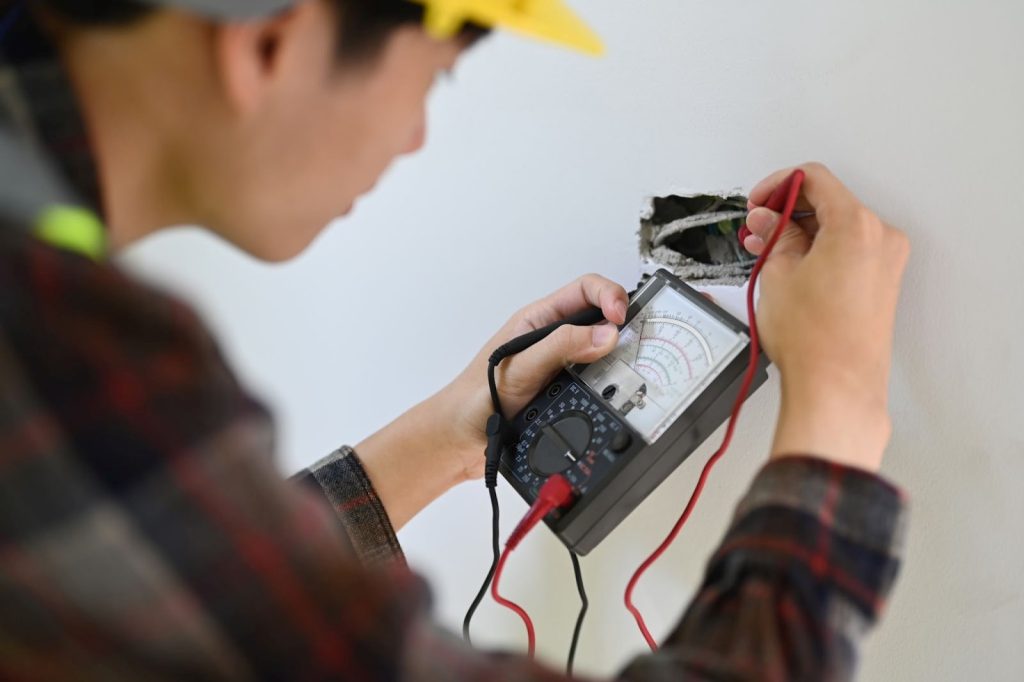Ensuring electrical appliances are PAT tested is essential if you are a business owner or a landlord. One of the many responsibilities that comes with owning a building or a house is the need to keep all of the electrical items within said building or house up to date with all the safety regulations.
The best way to guarantee that all the electrical appliances in your home or business are safe to use is to get them PAT tested. However, the rules around PAT testing and what it actually is can be confusing. In this guide we talk about all things related to PAT testing!
What is a PAT test?
Portable appliance testing or PAT testing is the process of testing electrical appliances to make sure they are safe to use. The level of testing needed differs depending on the type of appliance you have.
Whilst some appliances only need a visual inspection, others need a more thorough check as there are intricacies to the appliance that might cause problems. All kinds of portable equipment must be tested. This includes things such as kettles, toasters, and laptops or larger appliances such as fridges, freezers and washing machines.
The main reason for PAT testing is the upkeep of electrical safety. As a landlord, you have a responsibility to ensure that your rental properties are safe and that your tenants are in no type of danger. The most efficient way to carry out the proper risk assessment is to get a professional PAT test.
Who can perform a PAT test?
Although it is not a legal requirement to have your PAT test carried out by an electrician, it is the most responsible thing to do. The reason you should have your PAT test performed by an electrician is to make sure the test has been performed properly and that no mistakes have been made. In order to guarantee electrical safety, you should hire a PAT testing expert.
Is PAT testing a legal requirement for landlords?
Technically, PAT testing is not a legal requirement for landlords, the only requirement is that all electrical equipment within the property be in safe condition. Having said this, ensuring your appliances are in a safe condition is best done through PAT testing. It is also important to check what the requirements are with your local authority as different councils have different regulations.
Why should landlords carry out PAT tests?
Landlords should carry out PAT tests because it is their duty to ensure their property is completely safe to live in. Landlords have a responsibility to their tenants to keep the appliances and equipment within the property safe and usable.
Moreover, ensuring all your appliances are PAT tested will also protect you from any claims that might be made against you regarding electrical safety. In the long run, it will be worth the money for your peace of mind and to protect you against any legal problems that might arise.
What electrical items need to be PAT tested?
Any portable appliance needs to be PAT tested. This includes things such as:
- Fridges
- Freezers
- Washing machines
- Dryers
- Dishwashers
- Toasters
- Kettles
- Lamps
- TVs
- Chargers
- Laptops
- Etc.
The type of equipment that needs to be assessed is any kind of portable equipment. Fixed appliances do not need to be PAT tested, but benefit from a visual test once a year to ensure that they are in a good working condition.
How often should landlords carry out a PAT test?
How often you carry out a PAT test depends on the kinds of items you are testing. Items that are small, frequently used and that can be moved around easily should be tested more regularly than bigger items that remain in one place.
How often should appliances be PAT tested?
- Fixed appliances: Not required
- Stationary appliances: Once a year
- IT appliances: Once a year
- Moveable appliance: Every 6 months
- Portable appliances: Every 6 months
- Cables and chargers: Every 6 months
- Hand-held appliances: Every 6 months
How much does PAT testing cost?
PAT testing is not expensive. A professional PAT test will only set you back around £ 50 to £ 100. The price varies depending on how many appliances must be PAT tested, the size of the property and the electrician or PAT testing company chosen. You also need to factor in the possibility of faults being detected, in which case you will have to pay for the added cost of fixing the appliance.
What does a professional PAT test involve?
A PAT test involves a qualified electrician coming to your property and individually inspecting each and every portable appliance. Whilst some appliances only need a visual test, some require the use of testing equipment in order to carry out more thorough checks.
Once the PAT test of each appliance is complete, the engineer places a label on it indicating whether it passed or failed the PAT test and the date that the test was carried out. Labeling PAT tested equipment lets people know whether or not the appliance is safe to use. PAT testers also provide you with a safety certificate at the end of their visit which summarises the condition of all the electrical equipment, with all PAT tested appliances recorded.
How long does a PAT testing certificate last?
Should I record and label PAT tested appliances?
Yes, it is one of the key PAT testing recommendations that you keep a record of all PAT tested appliances. When you perform a test, the electrician will label all PAT test appliances. The reason PAT tested appliances are labelled as soon as they are tested is because it lets people know if they are safe to use.
The reason landlords should keep records of PAT testing equipment and appliances is because it provides a proof of past PAT tests in case anyone from the local council comes around to check on the safety of the building. It is also important to have a comprehensive set of records if you need to defend yourself against renters claiming wrongdoing.
How is a PAT test different from an EICR?
The main difference between a PAT test and an EICR is what is being checked. A PAT test checks the safety and condition of portable appliances, whereas an EIRC inspects the fixed wiring of a property.
Another key difference between these two types of checks is the fact that in England, Scotland and Wales, an EIRC is a legal requirement, whereas a PAT test is heavily encouraged to meet safety requirements.
PAT testing services
PAT testing is the best way to ensure the safety of your tenants and renters. The best way to carry out a PAT test is to hire a licensed professional electrician who can carry out the test. Legionella Risk and PAT is the number one company for PAT testing in Scotland. You are guaranteed to receive efficient, high quality, professional service when you book your property’s PAT test with us.
Our comprehensive check includes:
- Inspection of plugs and wiring.
- Cable inspections and connection tests.
- Identifying continuity and testing it.
- Lead polarity checks.
- Insulation resistance tests and electric shock prevention.
We offer both domestic and commercial PAT testing services. PAT testing is a key responsibility that all landlords need to live up to, so it is essential that you book regular PAT tests.


